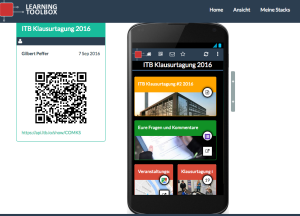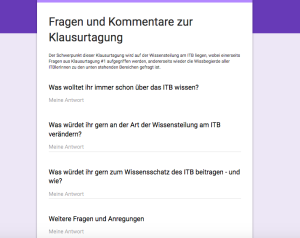Bringing Learning Toolbox to users – Part One: Workshop with ITB researchers
This week we have taken further steps in the fieldwork of our EU-funded Learning Layers (LL) project and its key product Learning Toolbox (LTB) developed in the construction sector pilot. The LTB has been shaped together with our application partners in the North-German construction industries and trad to support workplace learning and/or learning in the context of work processes. With the two workshops that we organised on Wednesday (7.9.) and Thursday (8.9.) we wanted to present the Toolbox and to bring it close to users. With researchers from our institute – Institut Technik & Bildung (ITB) – we wanted to discuss interfaces and future cooperation prospects. With representatives of craft trade companies in Bremen region we wanted to discuss specific needs and opportunities for using the Toolbox in their work – and to get feedback for further development. In this first post I focus on the workshop with ITB researchers.
Getting an up-to-date picture of Learning Toolbox and where it can be used
Many of the ITB colleagues had already participated in earlier events in which we had informed them of the LL project, on our work with the construction pilot and on the participative design processes that led to the development of the LTB. Therefor, Werner Müller (ITB) gave a very brief over view and then handed over to Gilbert Peffer (CIMNE) who represented the developers of LTB. Gilbert gave an up-to-date presentation on the key features of LTB and on its usability in different working and learning contexts – see Gilbert’s slides here: LTB-WS_Handwerksbetriebe
As a part of his presentation Gilbert also demonstrated live the mobile application, the editor (Tilestore) and the Online Guide. Finally, he gave a sneak preview to some new functions that are being tested and will appear in the next version.
Engaging ITB researchers as users of Learning Toolbox
Together with the LL team of ITB Gilbert had prepared a specific application – a stack – in the Learning Toolbox to support the preparation of an internal ITB event (“Klausurtagung“) later this year. With this stack (see the screenshots below) he showed, how the information on the forthcoming event can be delivered and the participants’ contributions can be obtained in an interactive way.
We became aware of the questionnaire that has been prepared and of the opportunity to contribute via using the LTB.
Discussion on the potential use of Learning Toolbox in further ITB projects
In the following discussion we mainly focused on possible use of the Toolbox in other (ongoing or forthcoming) ITB projects. We discussed issues on data protection, data privacy and confidentiality – who controls, who has access. We also discussed the potential to develop the Toolbox as a contributor to e-portfolios of apprentices and trainees. Several questions were raised on the role of social media (e.g. Facebook) and on good or bad examples how it is being used. In the light of our multimedia training activities with our application partners (in particular the training centre Bau-ABC) we could give insights how they are using Facebook to promote professionalism and commitment to their trades via specific FB-groups.
Altogether, many of these questions could be responded with reference to field visits and working events on which I have reported on this blog during the recent months. With some of the questions we could refer to issues that would come up with the discussions with craft trade companies in the workshop scheduled for the next day. And with some questions we took note for the developers of the Learning Toolbox. We still hav work to do in the ongoing project.
– – –
I think this is enough of the first workshop. In my next post I will report on the workshop with representatives of craft trade companies in the construction sector.
More blogs to come …


